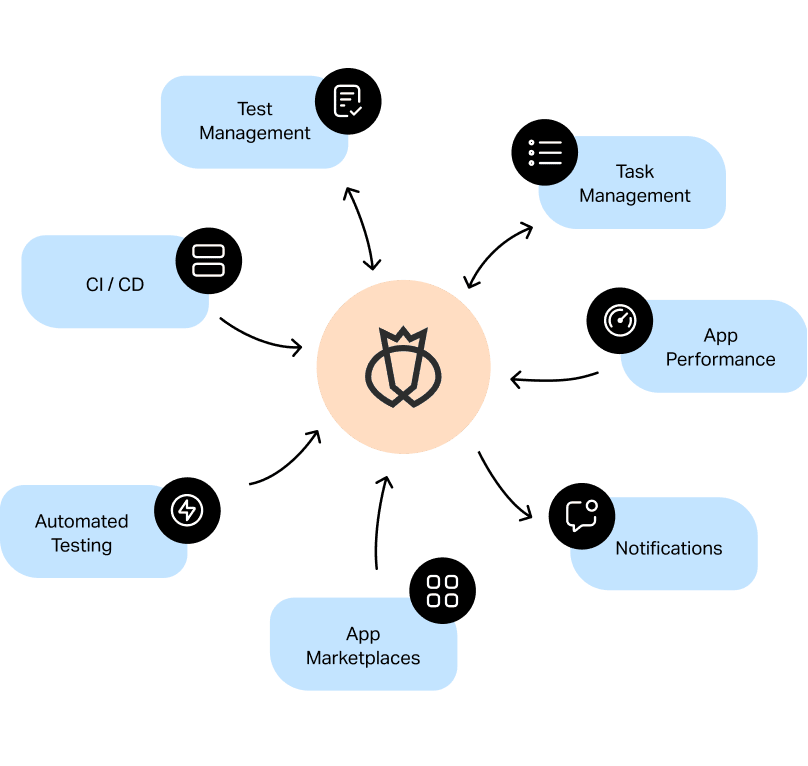Choosing the Right Tools for Effective Automation Testing Solutions
Choosing the Right Tools for Effective Automation Testing Solutions
Blog Article
Making Sure Success in Automation Testing: Secret Metrics, Challenges, and Solutions Every QA Team Ought To Know
In the world of software quality control, the landscape of automation testing is ever-evolving, requiring a meticulous approach to make certain seamless operations. Secret metrics function as the compass directing QA groups via the huge terrain of test automation, clarifying progress and areas for enhancement. Nonetheless, challenges impend huge, typically casting darkness on the path to success. By understanding these obstacles and applying effective options, QA teams can browse via intricacies with finesse. The journey to grasping automation testing is led with nuances that require a keen eye for tracking, analysis, and constant renovation. automation testing. As the sector drives onward, the pursuit for optimal performance in automation testing remains a consistent pursuit, prompting QA groups to outfit themselves with the knowledge and techniques crucial for triumph.
Importance of Trick Metrics
Comprehending the significance of key metrics is essential for examining the performance and effectiveness of automation screening processes. Key metrics work as measurable actions that supply useful insights right into different facets of the testing process, such as test insurance coverage, test implementation time, issue density, and examination case effectiveness. By analyzing these metrics, QA teams can identify bottlenecks, inefficiencies, and locations for improvement within their automation screening framework.
One vital aspect of vital metrics is their capability to track progression and keep track of the total health of the screening procedure (automation testing). They enable stakeholders to make enlightened decisions based on data-driven understandings, which can lead to a lot more efficient screening techniques and far better source allotment. In addition, key metrics can assist groups set realistic objectives, gauge the success of automation efforts, and show the ROI of automation screening efforts

Common Obstacles Dealt With
Difficulties typically experienced in automation screening processes can considerably influence the general efficiency and performance of QA groups. One of the significant challenges is the choice of the best test instances for automation. Not all examination situations are appropriate for automation, and choosing the incorrect ones can result in lost time and sources. Furthermore, preserving examination manuscripts can be an overwhelming job, specifically as the application goes through frequent adjustments. Test script upkeep requires continual updates and adjustments to ensure they mirror the current capability precisely. An additional common obstacle is the preliminary investment required for establishing automation frameworks and devices. This can be a barrier for some companies, especially smaller sized ones with limited spending plans. Furthermore, automation testing might not cover all aspects of testing, such as functionality and customer experience testing, which still need hand-operated treatment. Overcoming these difficulties calls for proper planning, critical test case choice, durable upkeep procedures, ample resources, and a clear understanding of the restrictions of automation screening.
Efficient Solutions for Difficulties
To deal with the obstacles run into in automation screening, applying efficient services is important for enhancing the performance and efficiency of QA teams. One key solution is to purchase robust training programs for QA groups to ensure they have the necessary abilities to efficiently utilize automation tools. Training can link understanding gaps, boost understanding of automation frameworks, and boost scripting abilities, ultimately causing a lot more effective examination development and implementation.
One more vital option is to establish clear interaction networks within the QA team and with various other stakeholders, such as developers and task managers. Efficient communication aids in lining up expectations, sharing progression updates, and immediately dealing with issues or obstacles that may develop during the automation testing process.

Monitoring and Analysis Strategies
Implementing efficient monitoring and evaluation strategies is critical for making sure the success and performance of automation testing procedures. Additionally, examining test outcomes and metrics provides beneficial insights right into the quality of the Your Domain Name software application being examined and the efficiency of the screening strategy.
One key strategy in surveillance and analysis is the use of dashboards that settle appropriate metrics and KPIs in an aesthetically accessible format. These dashboards supply an extensive introduction of examination implementation status, test protection, flaw fads, and various other important details. On a regular basis assessing and analyzing these dashboards can help QA teams make notified decisions, prioritize tasks, and enhance screening initiatives.
Furthermore, implementing automated notifies and notifications based on predefined thresholds can improve positive tracking and timely intervention. By setting up notifies for performance discrepancies or test failures, teams can address issues quickly and avoid them from intensifying. Generally, tracking and evaluation strategies play a vital role in guaranteeing the efficiency and success of automation testing initiatives.
Continuous Improvement Approaches
Enhancing the efficiency of automation screening processes demands the consistent refinement of techniques and approaches. One crucial strategy to boosting automation screening processes is to conduct normal testimonials and retrospectives.

Conclusion
Finally, it is crucial for QA groups to understand the vital metrics, difficulties, and remedies in automation testing to make sure success. By very carefully keeping an eye on and analyzing information, implementing efficient solutions to typical challenges, and constantly boosting strategies, QA groups can optimize their testing procedures and deliver high-grade software. Sticking to these methods will eventually bring about much more reliable and effective automation testing methods.
By assessing these metrics, QA teams can determine bottlenecks, inadequacies, and areas for enhancement within their automation screening you could check here structure.
Additionally, essential metrics can aid teams set sensible objectives, measure the success of automation efforts, and demonstrate the ROI of automation screening efforts.
Challenges typically run into in automation screening processes can substantially influence the total efficiency and effectiveness of QA teams. Automation testing may not cover all aspects of testing, such as functionality and customer experience screening, which still require manual intervention.In conclusion, it is important for QA groups to comprehend the crucial metrics, obstacles, and remedies in automation screening to ensure success.
Report this page